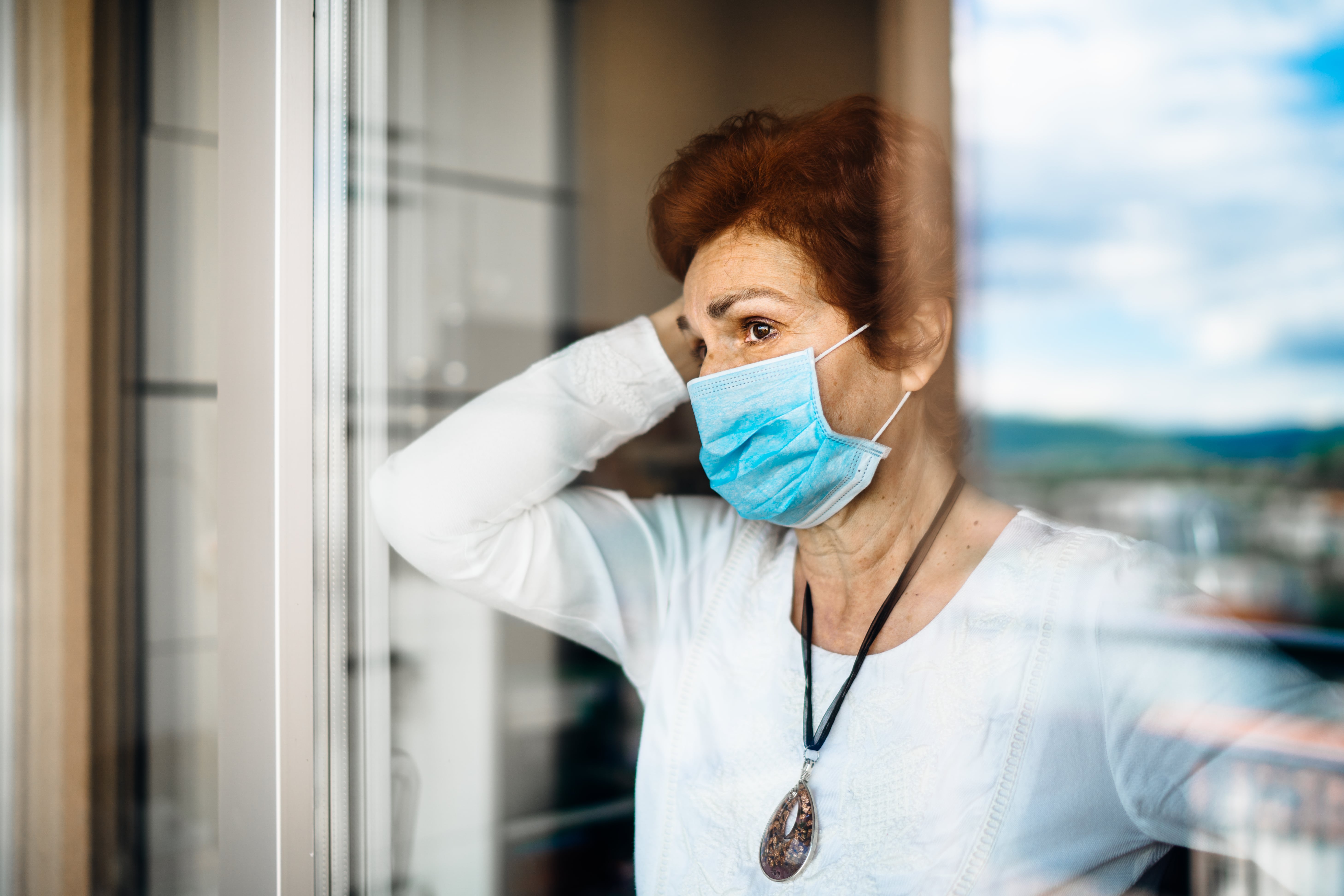Asset Publisher
Transitioning Away from Working—and Caregiving—at Home During COVID-19
By Lisa Weitzman | 09/14/2020

A caregiver wearing a protective face mask
As members of the sandwich generation, we may feel squeezed, torn between trying to balance our work responsibilities with caring for children, a spouse/partner, an older loved one and ourselves. While the pandemic has been challenging for many people, those who are already stretched thin have been pulled even more so.
Over the past few months, we may have gotten used to changes such as working from home, wearing a mask when we go out, following the demands of physical distancing and facing the reality of social isolation. However, we may still be struggling to find ways to balance an older loved one’s need for independence with public health recommendations encouraging them to outsource their errands and have food and prescriptions delivered to their home. And just when we think we have mastered the juggling and multi-tasking, school in some form has begun again, employers are talking about transitioning back to on-site work environments, and we may not be able to help the older loved one we care for navigate their own time staying at home during the pandemic in the same way. As US News & World report commented, “[T]his pandemic just handed us a whole new set of fears, restrictions, burdens, and things to feel guilty about.”
The challenge, of course, is that life is not opening evenly across the board. Somehow, many employees are expected to handle increased job demands while concurrently managing home schooling and the continued closure of all on-site programming for older adults. In other situations, grandparents may be the back-up for childcare, but that may not currently feel like the safest option, as we all try to protect our older loved ones from unnecessary exposure to the virus. Now what?
Creativity and flexibility need to be the rules of the day when at all possible. Here are several things we might consider:
- Talking with employers about flexible work options. Can we continue to work from home or to flex our hours? How will we create a safe work environment for ourselves?
- Remembering that it is OK to modify normal routines:
- We might consider using paper plates and disposable products at home the first few weeks to ease the pressure of cleaning up.
- If we haven’t already, we can engage other family members or home care professionals in some of the household and caregiving responsibilities that we can no longer manage. Perhaps someone else can handle daily tasks like bathing, dressing, and/or meal preparation for an older loved one, allowing us to spend time together without having to focus solely on chores.
- If cooking is too stressful during the transition, we can consider easy prep meals or home-delivered meal options, and/or take out from local restaurants.
- We can lay out our clothes the night before to save time on last minute wardrobe decisions.
- We might also keep a list of needed items for loved ones and family on our phone so that we can run errands as we travel to and from work rather than scheduling an extra trip.
- Taking care of ourselves, and scheduling personal time into our routine. No plan will work if we are not physically or emotionally healthy enough to enact it.
- Exploring the supportive options offered through workplace Employee Assistance Programs. For example, WeCare…Because You Do, a service provided by Benjamin Rose Institute on Aging, offers direct support for family caregivers of older adults with chronic conditions, helping to ensure that they have the information and resources to manage the needs of everyone who relies upon them. At these particularly stressful moments, having a personal coach or guide to help us navigate the daily demands can be crucial to feeling successful.
Related Assets
Suggested Reads
WeCare...Because You Do℠
Benjamin Rose's WeCare is a telephone- and email-based care coaching program that assists and supports older adults with chronic conditions and caregivers.
